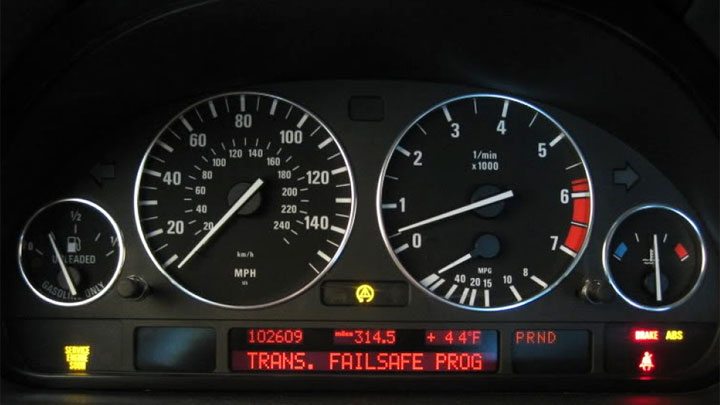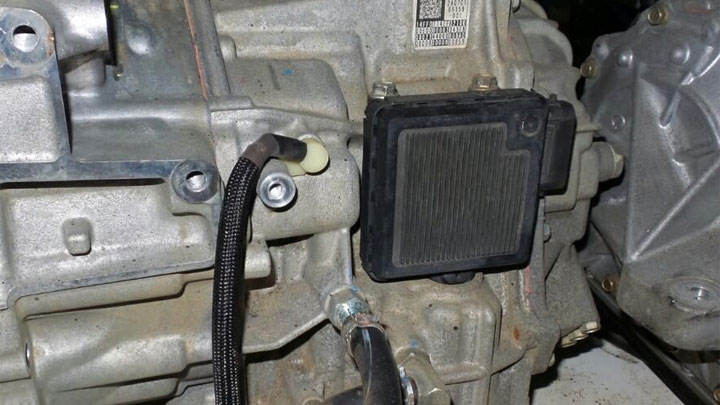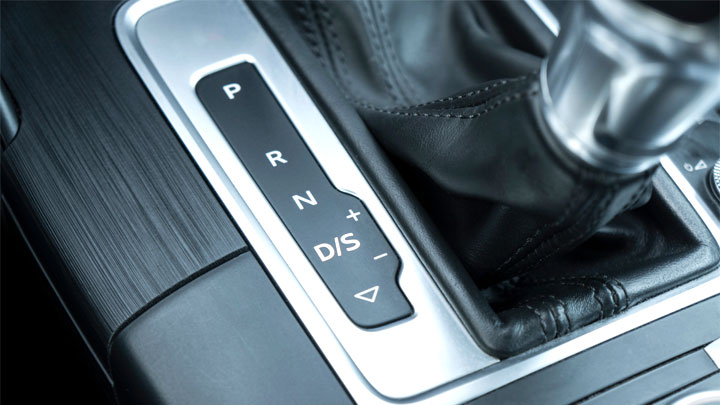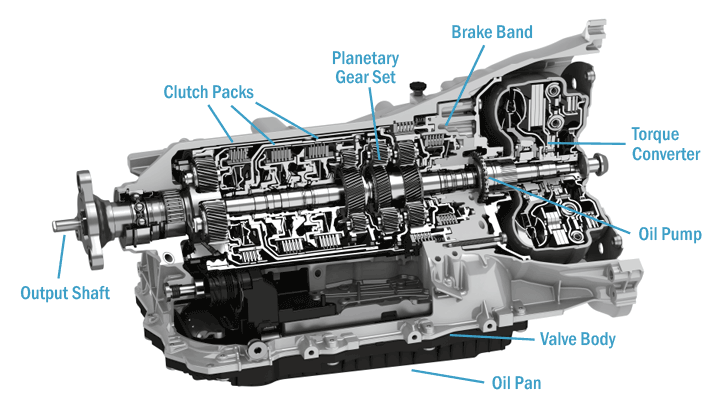Last Updated on May 11, 2021
When a check engine light becomes apparent, most tend to assume that an underlying issue with their vehicle’s engine is to blame. However, this is not always the case. Quite the contrary, an vehicle’s onboard diagnostic system monitors a number of modules, any of which can trigger the onset of a check engine light, should failure take place.
This is a scenario that is illustrated quite clearly, with the onset of an active P0700 diagnostic trouble code. As a general rule, this code has little to do with a vehicle’s engine, and instead denotes a transmission related fault.
While many motorists are somewhat versed in the repair of relatively minor engine-related issues, far fewer know where to begin, should a vehicle’s transmission be the source of their issue. However, even faults of this nature can be repaired, with a proper understanding of the condition at hand.
Read on to learn more about diagnostic trouble code P0700, as well as possible ways to remedy issues of this type.
What Does Code P0700 Mean?
Diagnostic trouble code P0700 indicates that a vehicle’s management software has detected a malfunction within the transmission control system. Modern vehicles feature numerous modules, each of which communicates with one another, in a bid to achieve a high degree of operational efficiency.
Along this same vein, a vehicle’s operating software is capable of registering any faults which have been stored within a particular module. When a vehicle’s PCM detects a serious operational fault within any of its corresponding modules, a check engine light is illuminated, as a way of drawing awareness to the issue at hand.
In the case of diagnostic trouble code P0700, a vehicle’s PCM has recognized an operational fault within the transmission’s control system, through which information is sent and received.
In most cases, a fault of this nature negatively impacts a transmission’s ability to function as intended. As a result, the affected vehicle typically enters “limp mode”, thereby limiting its power until the underlying issue is resolved.
Symptoms of Code P0700

The symptoms associated with trouble code P0700 often vary from one vehicle to the next. However, certain symptoms are far more prevalent than others, and occur in a relatively frequent manner, when code P0700 is active.
The following are several of the most common symptoms associated with diagnostic trouble code P0700.
- Transmission shift-related issues
- Intermittent driveability issues
- Poor fuel economy
- Onset of failsafe or “limp” mode
- Additional transmission codes
- Check engine light
Causes of Code P0700
The onset of an active P0700 code can occur for a number of reasons. However, virtually all of these reasons are rooted in the failure of a transmission’s ability to communicate as specified by its manufacturer.
In the vast majority of cases, this fault is electrical in nature, but can also be linked to internal transmission issues. The following are the most common causes of diagnostic trouble code P0700.
- Faulty TCM (Transmission Control Module)
- Defective valve body
- Open or shorted wiring in the transmission control circuit
- Malfunctioning shift solenoids
- Dirty or low transmission fluid
Is Code P0700 Serious?

Diagnostic trouble code P0700 is serious and should be treated as such. Any transmission-related fault is capable of causing severe drivability issues, many of which have the potential to leave you stranded. A transmission can even become stuck in a single gear, which in turn, poses danger to a vehicle’s driver and occupants.
Additionally, many newer vehicles are now designed to enter a failsafe mode, when code P0700 is stored. This failsafe mode effectively limits a vehicle’s performance, in a bid to mitigate the bulk of safety related failures. Because of the operational limitations faced when in failsafe mode, most will find it impractical to drive their vehicle in this state.
In any event, a vehicle exhibiting a P0700 diagnostic fault should be driven no further than is necessary, to reach a safe location. If the service center or repair shop of your choice is not located nearby, consider having your vehicle towed to the location where it is to be repaired.
How to Fix

Diagnostic Trouble Code P0700 is not always easy to diagnose and repair. In fact, doing so often requires the use of a specialty scan tool. Therefore, concerns of this type are typically handled by an automotive repair professional.
The following steps outline the process of diagnosing and repairing a P0700-related fault.
#1 – Check For Additional Codes
More often than not, DTC P0700 will be accompanied by additional fault codes, which more accurately describe the details surrounding any underlying failure.
Prior to beginning the diagnostic process, any such codes should be recorded and diagnosed as directed by factory-specific service literature.
#2 – Monitor Freeze Frame Data
In many cases, diagnosing those codes which accompany P0700, will remedy the issue at hand. However, if code P0700 still persists, you will need to monitor all pertinent freeze frame data, in order to determine under what conditions the offending fault occurs.
Check for significant variances between transmission input and output speed, to identify any excessive torque converter slip.
#3 – Perform a Visual Inspection
If no internal slippage or other operational faults become apparent during your diagnosis, you should perform a thorough visual inspection of your transmission’s wiring harness.
Begin at the transmission end of this harness, checking carefully for any pinched, frayed, or otherwise damaged wire. Continue by tracing the harness back toward its junction with the vehicle’s main data-link harness. It is also wise to inspect all externally mounted transmission sensors for signs of damage, or corrosion at their connectors.
#4 – Check Transmission Fluid
Additionally, it is wise to assess the state of your vehicle’s transmission fluid. Check to ensure that this fluid is filled to full operating capacity, while also ensuring that it does not appear overly dark in color, or have a foul, burnt odor.
#5 – Check For TCM Updates
If you have yet to locate the root cause of your vehicle’s transmission issues, the TCM (Transmission Control Module) should now be considered suspect. Check with your local dealership for any available TCM software updates.





even in neutral it doesnt go over 3500 rpm never seems to kick down into passing mode when i put it to the floor .
Sounds like you’re in limp mode. You’ll have to figure out why the car is in limp mode before you’ll get all your power back.
i over filled my transmission the check ing. light came on and wont move when step on gas. if i change the input and output sensors will this fix it?
I don’t know. What codes showed up when you scanned the check engine light?
My transmission just downgrade the speed and stay like that, they scanned it and the p0700 code came up but no other codes, at the dealer they said could be the TMC, shift solenoids or speed sensors, the thing is how to be sure what it is?
I don’t have enough experience with transmission diagnostics to say for sure, but a good transmission shop should know how to narrow that down for you. You could do a quick google to see if that code often comes up for your specific year, make, and model. If it does, there may be a common fix that will help save you some time and money.
2007 Pontiac G6 3.5 liter transmission code P0700 transmission control module requested MIL illumination and code P0842 transmission fluid pressure switch 1 circuit low voltage my transmission no reverse shift in reverse just jerk the first time then not move or reverse at all how to fix, other recommend to replace Transmission Control Module
It could be a transmission issue or an electrical issue. Someone will have to do some diagnostics on the transmission to help narrow it down.